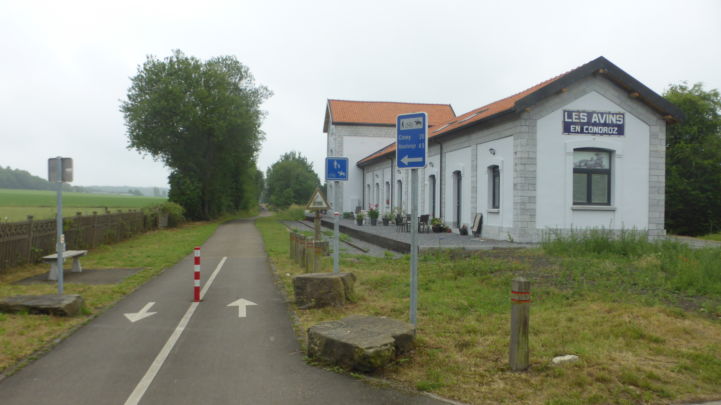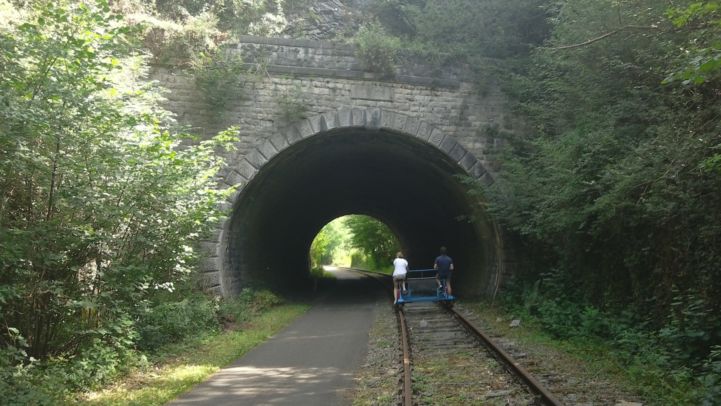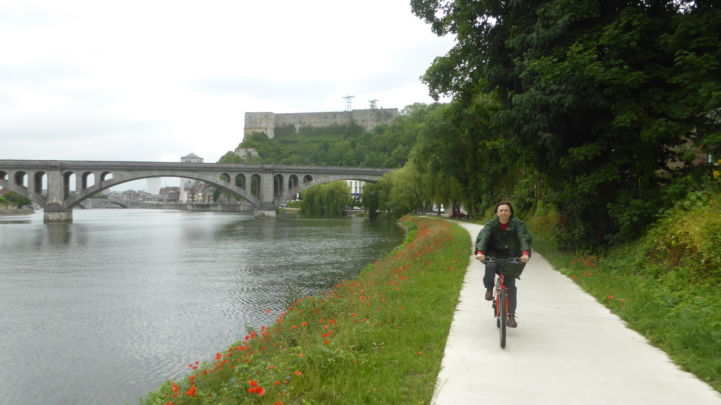Planning successful cycle routes: EuroVelo 19 as a best practice example – Part 2
The Meuse route as a backbone of regional cycling networks
The EuroVelo 19 - Meuse Cycle Route is a good example of the backbone approach to cycle route planning introduced in the previous article. The main route primarily follows the banks of the Meuse and is therefore an easy ride, almost completely without climbing. Thanks to the historical towpaths along the river, the route is also often car-free. Along the way, EuroVelo 19 has a lot to offer: cities along the Meuse have fifteen centuries of rich history and travellers can also experience spectacular nature, from canyons in the upper reaches of the Meuse to freshwater tidal marshes in the Biesbosch.

But there are also wonders to discover near the main route. In Wallonia, they are easy to reach with the regional cycling network RAVeL (Réseau Autonome de Voies Lentes - the Autonomous Network of Slow Roads). In Flanders and the Netherlands, you can follow the cycle node network. Below are some suggestions of detours or local loops to better explore the Ardennes and Limburg around EuroVelo 19.
RAVeL L150 splits from EuroVelo 19 in Anhée, between Dinant and Namur, close to the Yvoir train station. The route follows a former railway line, initially along the valley of the Molignée (Meuse tributary) and then through hillier landscapes until Tamines, which lies in a meander of the Sambre. From there you can either cycle back to the Meuse via EuroVelo 3 – Pilgrims Route (see below) or continue by taking a train.
Along the L150 there are several castles and abbeys, such as the Benedictine monastery of Maredsous, famous for its cheese. In summer, you might find some wild strawberries in the dense forest the route goes through. But the highlight of the L150 is the section between Warnant and Maredsous, where the railway tracks are kept, and on which you can ride a railbike.

The L150 is not the only RAVeL route built on former railways. Other notable examples are the L156, which starts in Mariembourg and joins EuroVelo 19 near the French town of Givet, and the L126 from Ciney (EuroVelo 5 – Via Romea (Francigena)) to Huy (EuroVelo 3 and 19). The L31, L210, and L212 between Saint-Nicholas and Liers can be used to explore the Liège area.
The Ourthe is another tributary stream of the Meuse in the Belgian Ardennes and along it runs one of the most beautiful cycling routes in Belgium through picturesque natural scenery with some geological gems. The route also passes Durbuy, known as the smallest town in the world, and several picturesque villages, such as Sy, with restored characteristic houses. However, the route along the Ourthe is not fully developed yet and, therefore, a bit more challenging than the other routes recommended here. There are still some steep slopes, muddy paths and roads to share with car traffic.
The Ourthe route starts in Marloie, which you can reach via EuroVelo 5 from Dinant, or by train from Namur or Liège. You can also take a shorter day trip from Liège; simply take the train to Melreux-Hotton, Sy or Comblain-la-Tour, for example.
Further along the Meuse, this route passes only 5 km away from one of only two national parks in Belgium: the Hoge Kempen in Limburg, which protects forests and heathland. Different "gateways" offer different ways to get to know the national park. At Kattevennen, you can explore not only the park, but outer space in the Cosmodrome. At Station As, climb the watchtower for a panoramic view over the national park. At the Mechelse Heide you can take a walk across the heathland.

From Maastricht you can make an easy diversion through the Hoge Kempen with the use of the cycle node network. For example, try to follow these nodes: 1 (Maastricht city centre) - 3 - 11 - 558 - 65 - 533 - 532 - 64 (Lieteberg) - 251 - 534 - 29 - 30 (Kattevennen) - 535 - 565 - 41 - 565 (Station As) - 551 - 60 (Mechelse Heide) - 55 - 56 (Maasmechelen, back on the Maas route).
Finally; if you want to take a break from cycling and exercise other muscles, try kayaking. The Lesse, which flows into the Meuse at Anseremme about three kilometres away from Dinant, is particularly suitable for canoeing. You can choose between starting at Gendron (12 km) or at Houyet (21 km). In both cases you will return to Anseremme.
In part three, Aleksander Buczyński writes about the particularities of the EuroVelo 19 being a river route. And if you missed it you can read here part one on route planning approaches.
Text and photos: Aleksander Buczyński